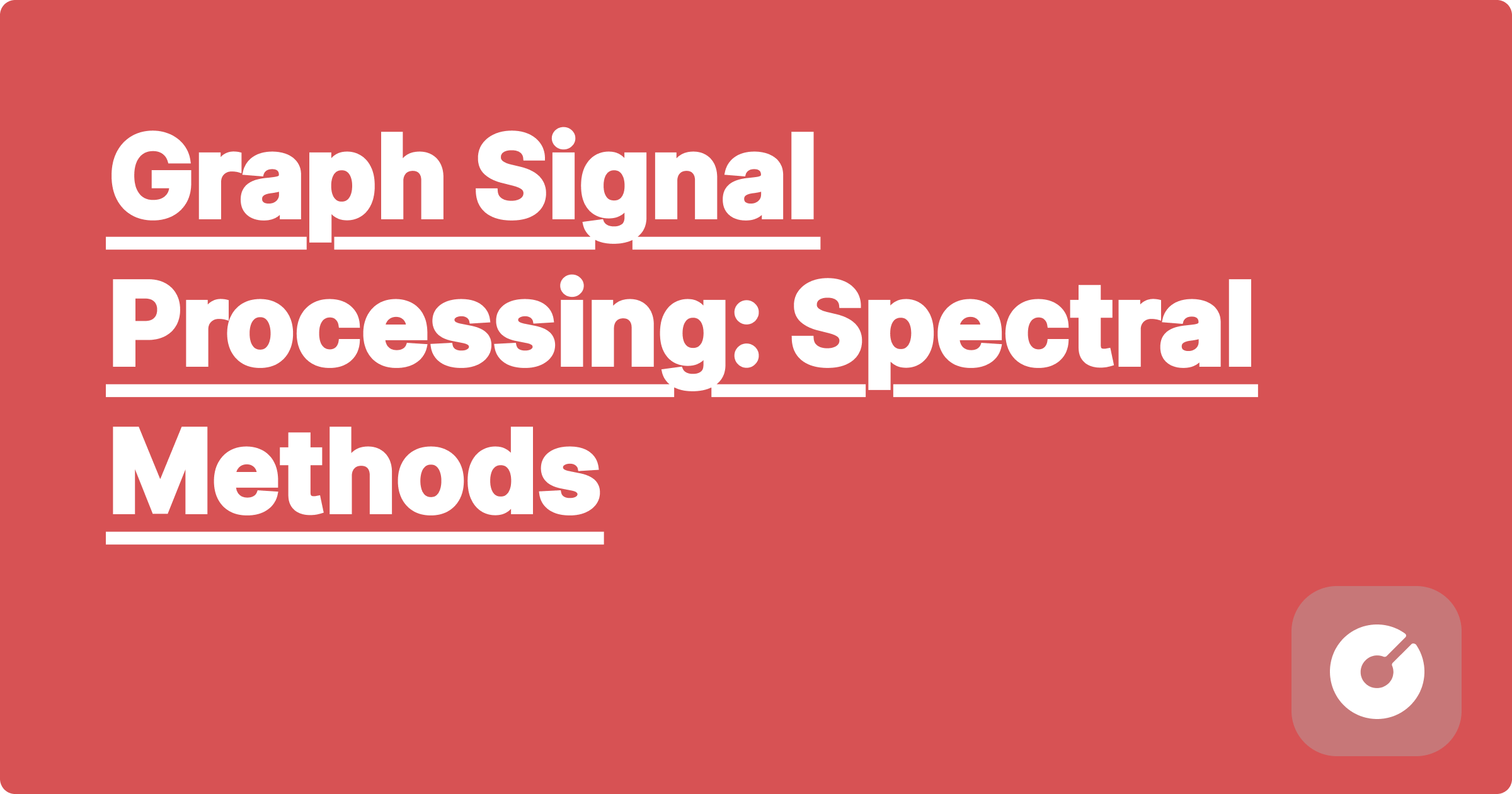
Graph Signal Processing: Spectral Methods
pre {
background-color: #f4f4f4;
padding: 10px;
border-radius: 5px;
overflow-x: auto;
}
.equation {
background-color: #f9f9f9;
padding: 10px;
border-radius: 5px;
font-family: serif;
}
.tip {
background-color: #e6ffe6;
padding: 10px;
border-radius: 5px;
margin-bottom: 10px;
}
.warning {
background-color: #ffcccc;
padding: 10px;
border-radius: 5px;
margin-bottom: 10px;
}
figure {
margin: 1em auto;
max-width: 80%;
text-align: center;
}
This blog post provides a comprehensive overview of spectral methods in graph signal processing (GSP), focusing on cutting-edge research and practical applications. We will delve into the mathematical foundations, explore state-of-the-art algorithms, and discuss real-world implementations with a strong emphasis on practical advice for researchers and graduate students.
Graph signal processing deals with signals defined on irregular domains represented by graphs. Unlike traditional signal processing on Euclidean spaces, GSP leverages the graph structure to analyze and manipulate data. The graph's nodes represent data points, and the edges encode relationships between them. This framework finds applications in diverse fields, including social networks, brain imaging, sensor networks, and more.
Spectral methods in GSP rely on the graph's spectral properties, derived from its adjacency matrix (A) and Laplacian matrix (L). The Laplacian matrix, commonly used, is defined as L = D - A, where D is the degree matrix (a diagonal matrix with node degrees on the diagonal). The eigenvectors and eigenvalues of L form the basis of spectral analysis.
\(L = D - A\)
The eigenvalues (λi) and corresponding eigenvectors (ui) of L satisfy:
\(Lu_i = \lambda_i u_i\)
These eigenvectors form an orthonormal basis for the graph signal space, enabling decomposition of any graph signal into its spectral components.
The GFT is a fundamental tool in GSP, analogous to the Discrete Fourier Transform (DFT) in traditional signal processing. It transforms a graph signal from the vertex domain to the spectral domain. Given a graph signal x, its GFT X is given by:
\(X = U^T x\)
where U is the matrix whose columns are the eigenvectors of the Laplacian matrix. The inverse GFT (IGFT) is:
\(x = Ux\)
Instead of applying a global filter in the spectral domain, localized filtering focuses on specific frequency bands or regions of the graph. This is crucial for tasks where only certain parts of the graph signal are relevant. Recent work (e.g., [cite relevant 2024-2025 preprint on localized spectral filtering]) explores adaptive localized filtering techniques, significantly improving performance in noisy environments.
GNNs leverage the graph structure for learning tasks. Spectral methods are central to many GNN architectures, with spectral convolutional layers utilizing the GFT to perform localized filtering in the spectral domain (e.g., ChebNet). The ongoing research focuses on efficient implementations and novel architectures ([cite relevant 2024-2025 paper on GNNs and spectral methods]).
Many real-world graphs are dynamic, with evolving structures. Recent research tackles this challenge by extending spectral methods to handle temporal changes. This involves developing time-varying graph Laplacian matrices and adapting the GFT accordingly. (Cite relevant papers exploring dynamic graph GSP.)
Let's illustrate a simple spectral filtering algorithm using Python and the `NetworkX` and `numpy` libraries.
import networkx as nx
import numpy as np
# Create a graph
graph = nx.karate_club_graph()
L = nx.laplacian_matrix(graph).toarray()
eigenvalues, eigenvectors = np.linalg.eig(L)
# Graph signal (example: node degree)
signal = np.array(list(dict(graph.degree()).values()))
# Perform GFT
gft_signal = eigenvectors.T @ signal
# Apply a low-pass filter (example)
cutoff_frequency = 5
filtered_gft_signal = np.where(eigenvalues < cutoff_frequency, gft_signal, 0)
# Perform IGFT
filtered_signal = eigenvectors @ filtered_gft_signal
print("Original Signal:", signal)
print("Filtered Signal:", filtered_signal)
Spectral methods in GSP find wide applications:
Despite its success, GSP faces challenges:
Future research should focus on:
Spectral methods are powerful tools in GSP, enabling the analysis and processing of graph signals. This blog post provided a comprehensive overview, ranging from fundamental concepts to cutting-edge research and practical implementations. By understanding the underlying theory and leveraging the available tools and resources, researchers and practitioners can effectively apply these techniques to a wide range of real-world problems.
```html
```
Second Career Medical Students: Changing Paths to a Rewarding Career
Foreign Medical Schools for US Students: A Comprehensive Guide for 2024 and Beyond
Osteopathic Medicine: Growing Acceptance and Benefits for Aspiring Physicians
Joint Degree Programs: MD/MBA, MD/JD, MD/MPH – Your Path to a Multifaceted Career in Medicine
Machine Learning for Spectral Clustering: Graph-Based Grouping
AI-Powered Spectral Methods: High-Accuracy Scientific Computing
Time Management in Medical School: Proven Methods for Success
Graph Master GPAI Data Visualization for Students | GPAI - AI-ce Every Class
High Speed Digital Design Signal Integrity - Complete Engineering Guide
High Speed Digital Design Signal Integrity - Complete Engineering Guide